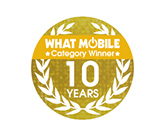Broadband Buying Guide
Buying guides
Choosing the right broadband package is important. It can be a very costly outgoing if you end up buying a deal that isn't right for you, which is why we offer free and impartial advice.
Cost
The number one question is, how much will broadband cost? There are generally two main expenses that come with an internet connection at home - the broadband itself, and the line rental. The line rental cost covers a landline, which supplies a telephone and broadband line to your home.
You may also need to pay a setup cost when you initially get your broadband installed by an engineer, and if you do opt for a limited amount of data, you could incur extra charges if you go over your allowance.
Broadband costs will differ depending on how much data you want to use on a monthly basis.
Location
If you live in a rural area, ADSL (asymmetric digital subscriber line) and fibre-optic broadband mightn't be available, but there are other options so you don't have to live life in the dark ages.
Mobile broadband comes in the form of a SIM card or dongle, which can plug straight into your tablet or laptop's USB port, respectively.
There are also Mi-Fi hotspots, which omit wireless internet signals allowing you to connect up to ten devices at once. SIM, dongles and MI-Fi hotspots all use the kind of internet you would get on your mobile - wireless and easy.
There's also satellite broadband, which supplies an internet connection through a satellite dish on the side of your house.
Got some questions? Check out our FAQs, or give us a call on 0800 781 2981.
Switching providers
Update: Following new rules introduced in June 2015, you no longer require a MAC in order to switch broadband providers. Instead, Ofcom's revised rulings move responsibility to your new provider - which means less stress for you.
The new rules, however, may not completely apply to customers switching to Virgin Media's cable network, or to a fibre-to-the-premises broadband service. This is known as a 'cease and re-provide' process. Find out more below.
Switching broadband with a cease and re-provide system (Virgin Media)
- Check your postcode (url link to postcode finder) to find out if fibre-optic broadband is available in your local area.
- If so, choose a package that sounds up your street.
- Contact your current provider and notify them of your plan to switch providers. This is where the two processes differ. Under the cease a re-provide system, you're required to notify both your current and future providers of your intentions.
Switching broadband with a gainer-led process (BT, EE, Sky, TalkTalk)
If you're moving to a broadband supplied by BT Openreach such a BT, EE, Sky or TalkTalk, you're looking at switching via a process known as 'gainer-led'. This basically means the provider you're switching to, is responsible for contacting the provider you're switching from, and transferring all your details.
This takes a lot of the legwork out for you, and also means you won't be without an internet connection in the interim.
Here's how to get started:
- Check your postcode and find out which services are available in your local area.
- Pick a provider and a package that suits.
- The new rules mean you don't have to contact your current provider, but rather you contact the provider you want to switch to. From here you'll receive written confirmation of what's going on, and everything else should be taken care of.
If you have questions about this new process, check out our FAQs.
Speed
Again, there are two different speeds of broadband, which come at different costs and can vary in availability depending on where in the UK you live.
ADSL is the older generation of broadband, which works through a copper telephone wire and generally gives you a download speed of about 16Mbp/s.
Fibre-optic, on the other hand, offers a superfast service. The best fibre-optic packages offer download speeds of up to 300Mbp/s.









